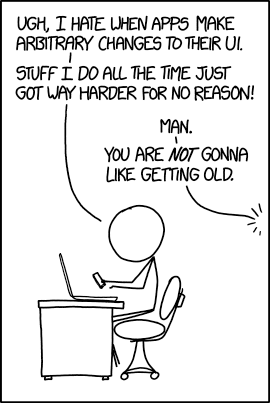Change is coming…
A lot of email providers are rolling out changes to their systems. Some of these changes are so they will comply with GDPR. But, in other cases, the changes appear coincidental with GDPR coming into effect.
It seems, finally, some attention is being paid to the mail client. Over the last few years the webmail providers have tried to upgrade their interface. Many of the upgrades are about managing high volumes of email in a more efficient manner. Google uses tabs while Microsoft has sweep and focused inbox.
It’s about time the mail client got an overhaul. My Apple mail client doesn’t look all that different from the desktop client I was using back in the late 90s on OS/2 Warp back in the late 90s. In some ways the OS/2 client was actually more functional. And, well, I do miss a lot of the flexibility of mutt in the shell.
Today, Google announced to Google Suite administrators that they would be rolling out a major client overhaul. G Suite admins who want to can join the early adopter program in the coming week. Techcrunch has a sketch of what the new mailbox layout looks like, done by someone who says they saw a Google engineer working on a train.
What’s interesting about the sketch is it seems tabs are going away. Given how many senders hate tabs I’m sure this is a welcome relief. We’ll see, though, if there’s not more inbox management built into the new client or not. The nifty new features are “snooze” – hide this email for some period of time and bring it back at some point in the future. The other big thing is calendar access right from the mail client.
I expect, too, that as OATH: brings the Yahoo and AOL mailboxes under one banner, there will also be some changes there. All of this amounts to more uncertainty in the email delivery space. But we’ll get through, we always do.

